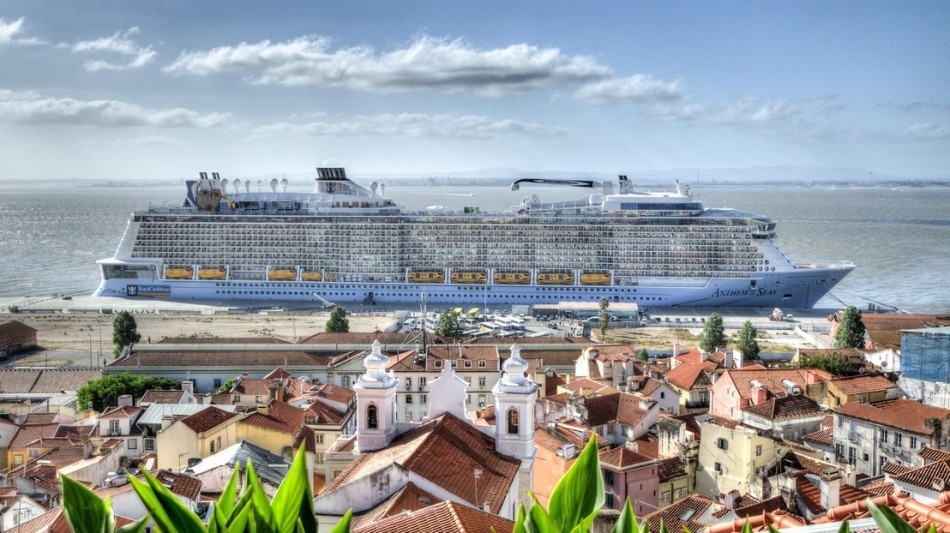Jan 23 2019
A fuel-cells-based system has been created by a researcher from EPFL to minimize the carbon footprint as well as energy consumption of cruise ships, which are becoming more and more popular among vacation goers across the globe.
 (Image credit: EPFL)
(Image credit: EPFL)
An increasing number of people, specifically from Asian countries, find the idea of sailing the seas for a few weeks on a luxury liner appealing. However, the fact is that cruise ships not just sail from one port to another: since they are authentic floating hotels that accommodate several hundred passengers, they use enormous amounts of energy for electricity, heating, air-conditioning, and a number of other aspects of life on board. In order to make these cruise ships more eco-friendly, Francesco Baldi, a scientist belonging to EPFL’s Industrial Process and Energy Systems Engineering Group (IPESE), has devised an innovative solution.
Reducing the Carbon Footprint of Ships
It’s easier to reduce the energy consumption of a merchant ship, because almost all of the energy is used for propulsion, unlike a cruise ship, which has various energy demands. My work focused on reducing CO2 emissions, initially by optimizing each of the ship’s systems and the design of the boat itself, to improve efficiency.
Francesco Baldi, Researcher, EPFL-IPESE.
The initial efforts led to a potential reduction in CO2 emissions of up to 6%–10% for a diesel-powered cruise ship.
Despite being promising, Baldi was not satisfied with this and hence turned toward alternatives to diesel engines. As part of a joint study with Aalto University in Finland, he considered using fuel cells on a ship. For this, he had to overcome the unique challenges that come up while sailing for thousands of kilometers at a stretch.
You need to store enough energy on board without taking up too much space. Hydrogen fuel cells are not suitable, because storing enough energy to travel long distances would take up a huge amount of space—around one third of the ship’s capacity—which is not realistic for a cruise ship.
Francesco Baldi, Researcher, EPFL-IPESE
Storage of Surplus Energy
Despite the fact that solid oxide fuel cells (SOFC) require high temperatures to operate and take nearly 20 hours to turn on, they are ideally suited for ships. The only requirement was to find how to use the surplus energy generated when they are put to constant use, which is essential in view of the long start-up times. This is just where Baldi intervened: his concept was to employ a system created at EPFL to convert unused energy into hydrogen, which is subsequently stored. Consequently, the ensuing fuel cells, tailored for ships, could produce either electricity to be used up on-board or hydrogen to be stored for future use. According to Baldi, this idea is specifically best suited to cruise ships.
In contrast to a diesel engine that produces pollutants like particulate matter and nitrogen oxides in addition to water and CO2, fuel cells offer the benefits of producing only water and CO2 as byproducts. In fuel cells, power is generated by means of a chemical reaction, making them considerably more eco-friendly compared to fossil fuels, as well as more efficient. The fuel cells designed at EPFL have realized efficiency of 75% versus <50% for even the most efficient diesel engine.
The only disadvantage is that the cost of fuel cells is 10 times compared to the production cost of a conventional diesel engine. “But prices will fall if demand increases. Also, the long-term cost is only 20%–30% higher than that of a traditional engine, and opting for this cleaner type of fuel will enhance the image of the ships’ operators.” Since this area lacks regulations, Baldi also looks at the potential for Europe, where a majority of the cruise liners are constructed, to share a part of the cost to incentivize the task of equipping ships with fuel cells. “This approach, which works for solar panels, could help cruise ships sharply cut their pollution in the future,” stated Baldi.
This study received funding from the European Union’s Horizon 2020 research and innovation program under the Marie Skłodowska-Curie grant agreement No. 708288.